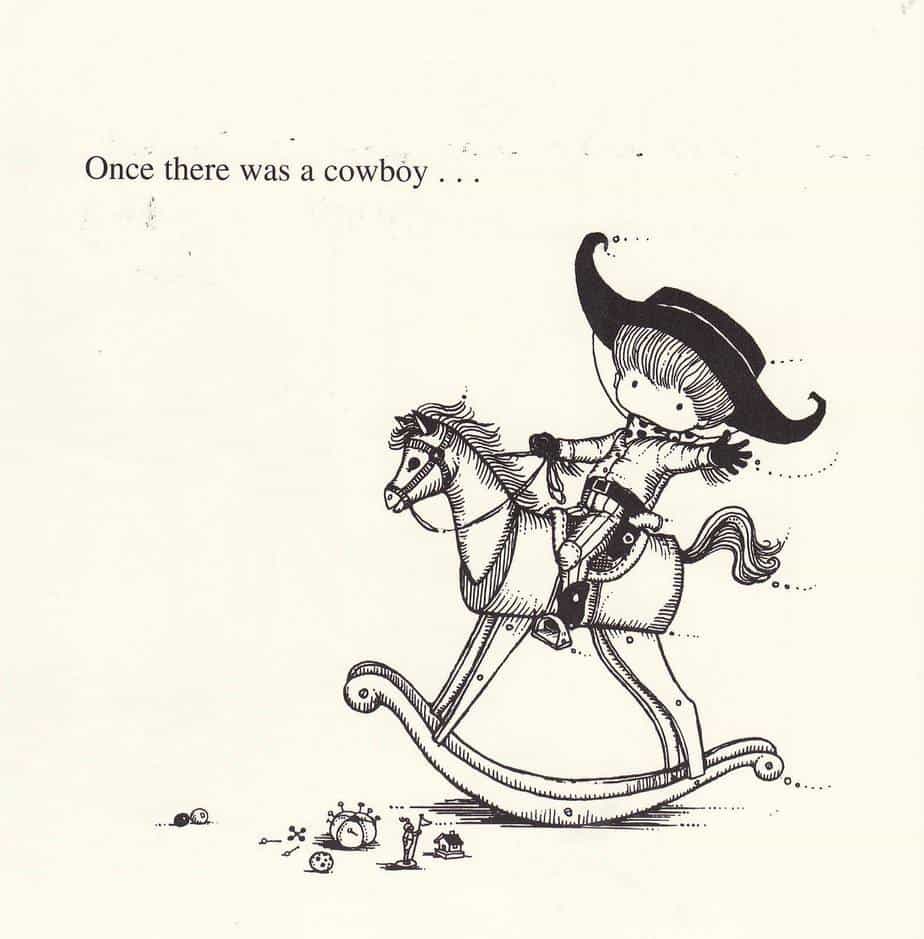Here’s the premise of Larry McMurtry’s Lonesome Dove: Two Texas Rangers decide to move cattle from the south to Montana running into many problems along the way.
CONTROLLING IDEA
Detail a legendary journey while including the harsh realities of Wild-Western life to show that the ‘legends’ of the Wild West were ordinary men working in unglamorous conditions.
Pulitzer Prize winners may have a reputation for being dense and requiring much work, but if that’s the case, Lonesome Dove is an exception. This is what you’d call ‘super readable’. A page-turner. Which is just as well, because you could build a house with these bricks.
If you would like to know what it feels like to be a cattle man in the Wild West in the mid 1870s, and you don’t like the idea of getting kilt or drinking black coffee for breakfast or hoiking up black phlegm from all the dust or using your saddle for a pillow while sleeping on the hard, cold ground; if you aren’t the owner of an actual time machine, then this is the book for you. McMurtry does an excellent job of detailing the day-to-day realities of being a cowboy in the Wild West.
And few authors would be more qualified. Larry McMurtry’s own father was a cattleman, along with every one of his eight uncles. McMurtry himself obviously absorbed a lot of the dialect, grammar and vocabulary of cattlemen, putting it to good use in his Western novels.
I wouldn’t have called myself a fan of Wild West stories beforehand. The West was a misogynistic setting, not to mention all the atrocities involved in almost wiping out the Native Americans. Cowboy stories can sometimes glamorise and glorify the white man’s domination. Indeed, McMurtry can’t rewrite history, but nor does he glamorise these men. “Would you want to know them?” he said once in an interview, acknowledging that the main characters are emotionally stunted, unreasonable people. Yet they are also rounded. Gus and Call feel like real people. Newt, the ‘Lonesome Dove’ of the title, is the teenage newcomer, and the reader’s introduction to this foreign world.
There is violence in this book, as there was in the Wild West. But there is no attendant glory. Rape scenes are referred to but not described in gory detail. Even the big struggle scenes which have been extended for dramatic purposes in the mini-series adaptation comprise just a page or two in the book. The vast majority of text describes day-to-day practicalities and conversations and emotional landscapes. Gus drops many funny and quotable one-liners.
The female characters are constrained by the gender rules of their time. Despite this, they are as strong and stoic as the men. As it says on the cover, ‘If you only read one Western novel in your life, read this one.’
LONESOME DOVE GLOSSARY
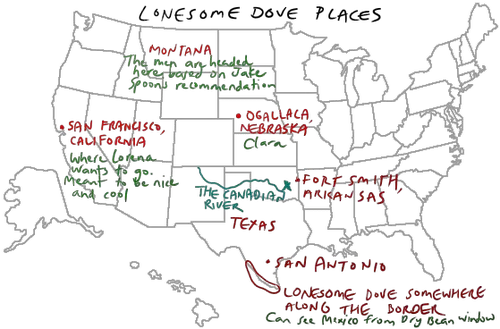
DIALECT
Brush-busting – riding through scrub
Duds – clothes
Carrot, bean, dingus, pod, a poke etc – well, you can guess from context.
Cowpie – a dropping of cow dung. McMurtry spells it as a single word, but pronounce it as two.
Crack one’s noggin – to go a bit crazy
Chili-bellies – derogatory term for Mexicans
Chunking varmints – killing animals to eat by throwing rocks at them
Cut out a beef for the cook – to choose a cow from the herd in order to eat
Draw rein – to rein in a horse and make it stop
Harry – to harry an area is to cause trouble; to persistently carry out attacks on (an enemy or an enemy’s territory)
In chunking distance of – near
Lope – the cowboys use this word to mean ‘ride a horse’ somewhere as in ‘lope on over to X’
Lunkhead – a slow-witted person
Nuzzling the jug – having a drink
On the prod – riled up and stirring others up for a fight
Plays out – when a horse ‘plays out’ she has had it, with no energy left, and can die.
Soap bones – a disparaging term for someone’s horse. (They used to make soap from horse fat and glue from the hooves.)
Sour as a clabber – describes Jake’s look. Clabber is a food produced by allowing unpasteurized milk to turn sour at a specific humidity and temperature. Over time, the milk thickens or curdles into a yogurt-like substance with a strong, sour flavour.
Talk guff – guff is ridiculous or insolent talk
Sporting life – sex work
Wet as a muskrat – a large semiaquatic North American rodent with a musky smell, valued for its fur
PLACES AND HOUSES
Adobe – a building made of clay bricks (or the clay, or the bricks). Adobe buildings are common in countries with low rainfall. The clay is basically silt deposited by rivers. The bricks are dried under the sun.
Army trail – these were well-marked, making it possible for even someone with as few trekking skills as Roscoe to make his way between towns.
Barroom – a room where alcoholic drinks are served over a counter. July and Roscoe are warned that in the Wild West they’ll be facing ‘more than a barroom scrape in Arkansas’.
Bluff – a high, steep bank, as by a river or the sea, or beside a ravine or plain; a cliff with a broad face. The men see limestone bluffs to the west as they travel north.
Breastwork – a low temporary defence or parapet. A little fort made by Gus and Pea to protect themselves from Indian arrows
Cistern – When I think of a cistern I think of the toilet, but the cistern is the tank used to store rainwater in Lonesome Dove. Unlike wells, cisterns have waterproof linings. In Lonesome Dove, the well is still being dug, and no one particularly wants to dig it in the heat.
Corral – a pen for livestock, especially cattle or horses, on a farm or ranch. We might just say a paddock, here. Or an enclosure.
Cow trail – What the cowboys call the cattle trail, the path used to transport cows from place to place. You can find old maps with major cattle trails marked on them. The cow trail of this story is the Goodnight-Loving Trail, which is highly significant because this trail is named after the two men who inspired the characters of Gus and Call.
Cutbank – A cut bank, also known as a river cliff or river-cut cliff, is the outside bank of a water channel (stream), which is continually undergoing erosion. So, not quite a ‘cliff’ but just as hazardous to your cattle and horses if you fail to see it coming.
Freshet – the flood of a river from heavy rain or melted snow. Gus and Pea met with this after being surrounded by Indians in Montana.
Gully – A gully is a landform created by running water, eroding sharply into soil, typically on a hillside. Gullies resemble large ditches or small valleys, but are metres to tens of metres in depth and width. Blue Duck is in the habit of retreating to a particular gully when tailed.
Llano – (in South America) a treeless grassy plai. “The llano is a big place.”
Red River – The Red River, or sometimes the Red River of the South, is a major tributary of the Mississippi and Atchafalaya rivers in the southern United States of America. Legendary for drowning cowboys.
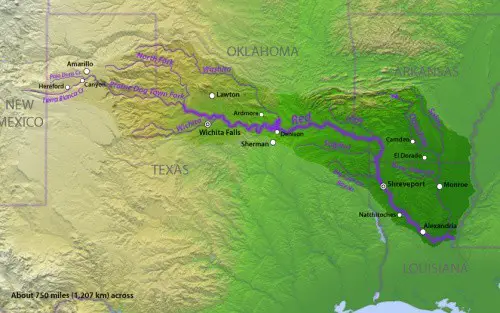
The Canadian – shorthand for The Canadian River. The Canadian River is the longest tributary of the Arkansas River. It is about 906 miles (1,458 km) long, starting in Colorado and traveling through New Mexico, the Texas Panhandle, and Oklahoma. Blue Duck tells Gus that he’d better watch out if he sees him north of The Canadian River.
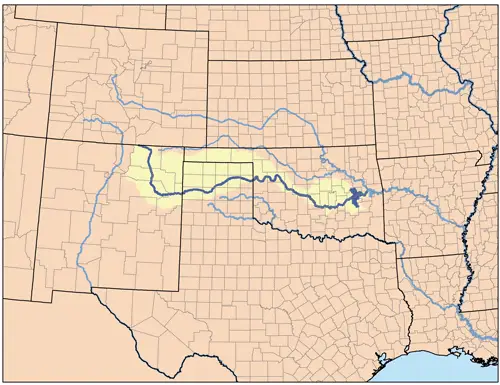
Two-bit town – Jake Spoon returns to Lonesome Dove and is disappointed to find it’s still a ‘two-bit town’ (‘missing 15 cents’). ‘Two-bit’ means cheap/worthless and comes from “the value of a quarter of a dollar.” There is no such thing as a single bit, at least not anymore. The now obsolete Spanish dollar comprised eight reals, or eight bits, so a quarter of the dollar equaled two bits. The phrase “two bits” carried over into U.S. usage, though there’s no bit coin in U.S. currency. “Two bits” first appeared in print in English in 1730 (and later developed the figurative sense of “something of small worth or importance”), followed in 1802 by its adjectival relative. These days, the adjective has far surpassed the noun in popularity. (Merriam-Webster)
Windlass – apparatus for moving heavy weights, like the thing over a well which is used to pull up dirt (and presumably water, when it’s dug).
PEOPLE
Apache – refers to a number of Native American groups with little political unity.Apachean people formerly ranged over parts of Arizona, Mexico, New Mexico, Texas, and Colorado. In Lonesome Dove the Apache don’t get much of a mention, except to say Call and Gus once thought they’d head ‘out west of the Pesos’, but only the rare settler has challenged the Apache, so there was ‘no need for Rangers’. I wonder why the white men left the Apache alone, even while fighting the Comanche? The Apachean peoples had already been fighting with the Spanish and Mexican peoples for centuries. By the time the American Army thought of fighting them, they were very good fighters and strategists.
Blackfeet – not to be confused with the ‘Blackfoot Confederacy’, of which about 6,000 live today. The Blackfeet Nation are called Pikáni and are mainly in Montana. Both Blackfoot and Blackfeet peoples speak Blackfoot language. Much of their history is similar. They were named ‘blackfeet’ by white settlers, because they did something to the bottom of their moccasins to make them more durable. (Maybe using pine tar or charcoal or something like that.) Or it may have been a reference to the bottoms of their actual feet, which turned black from running barefoot.
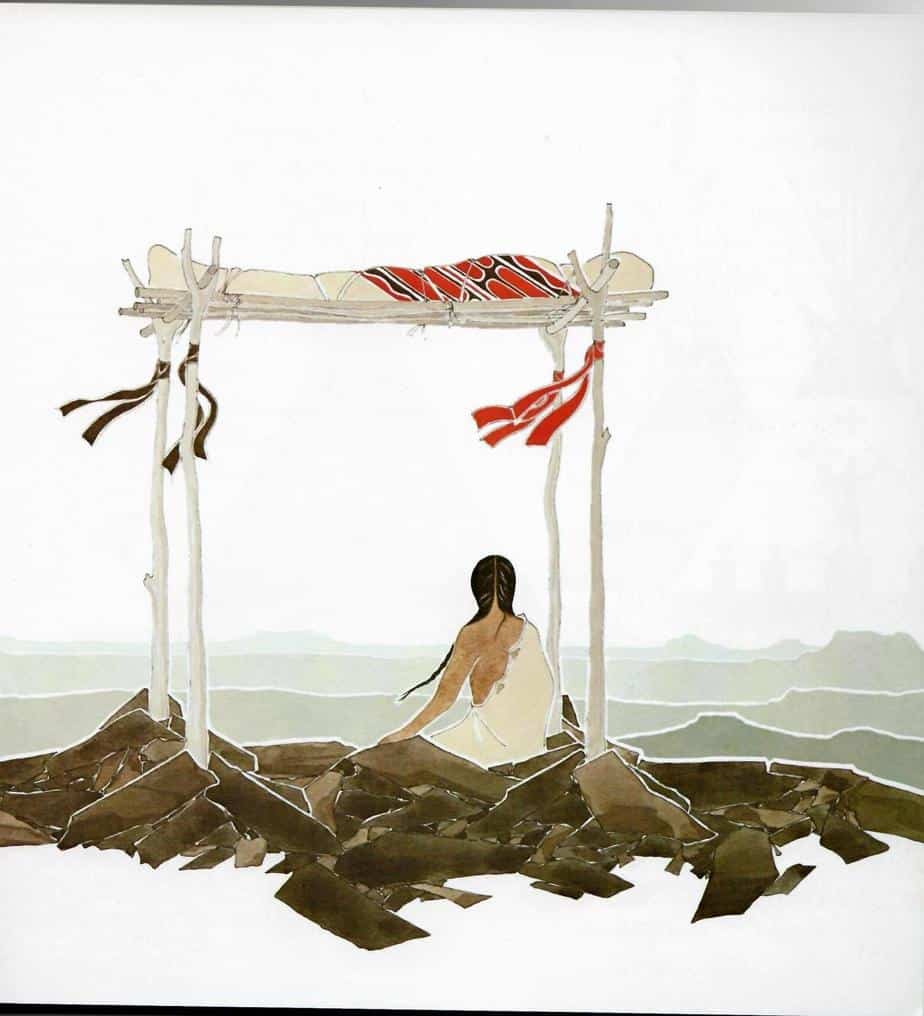
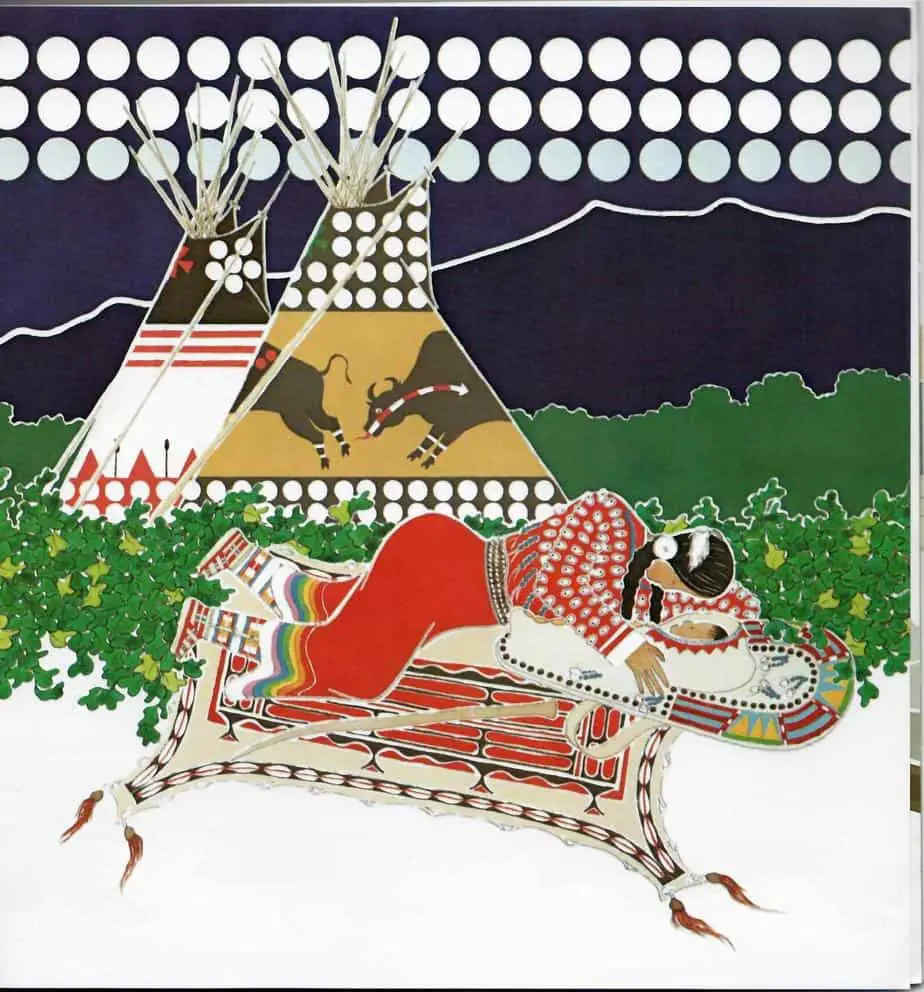
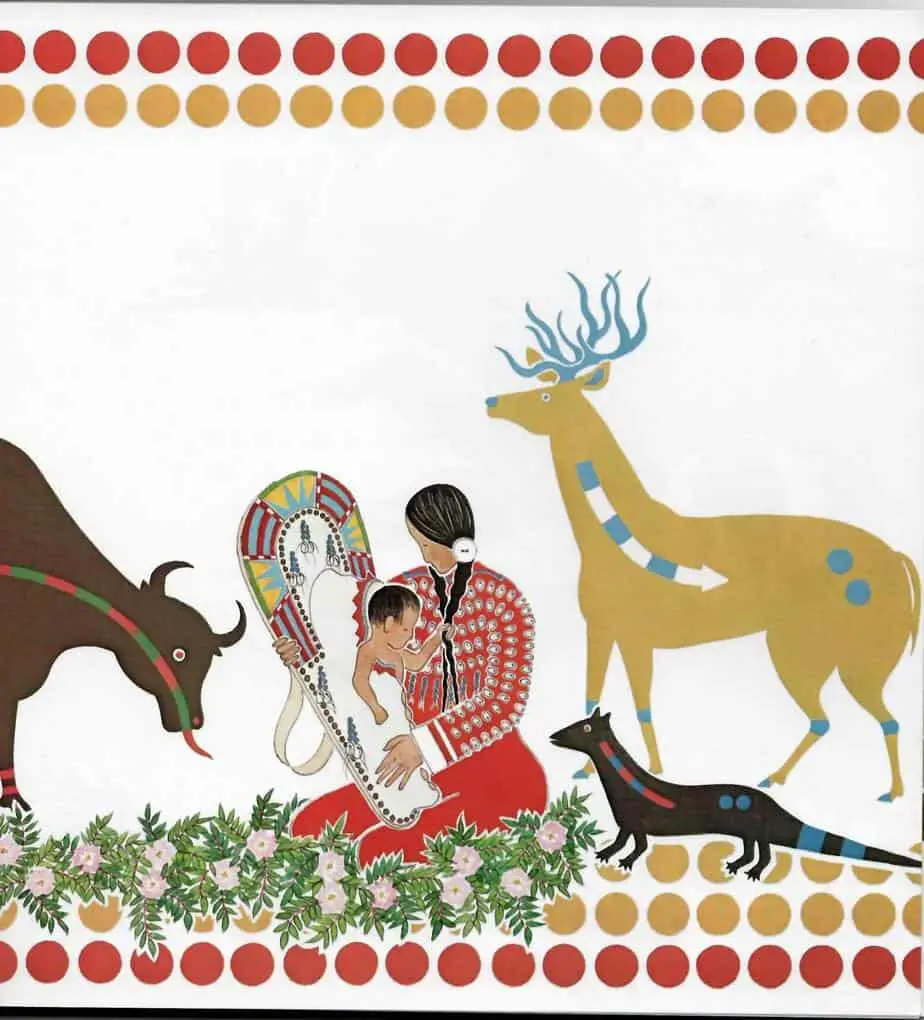
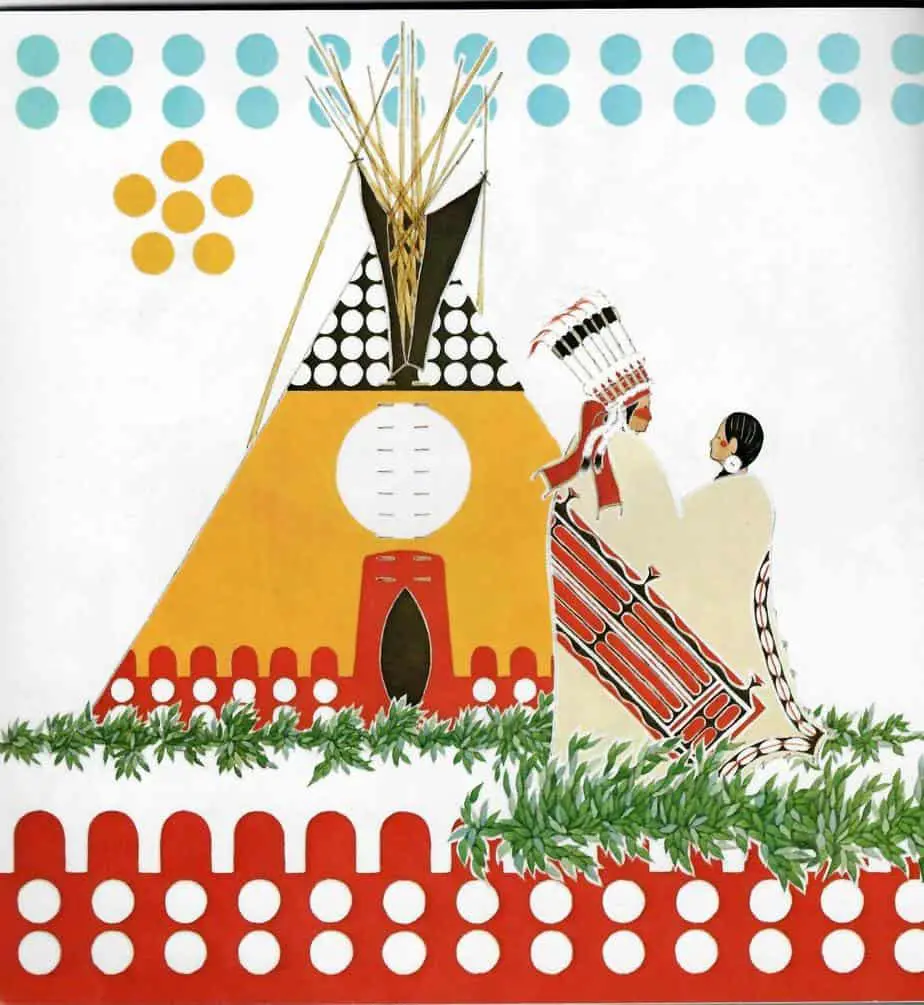
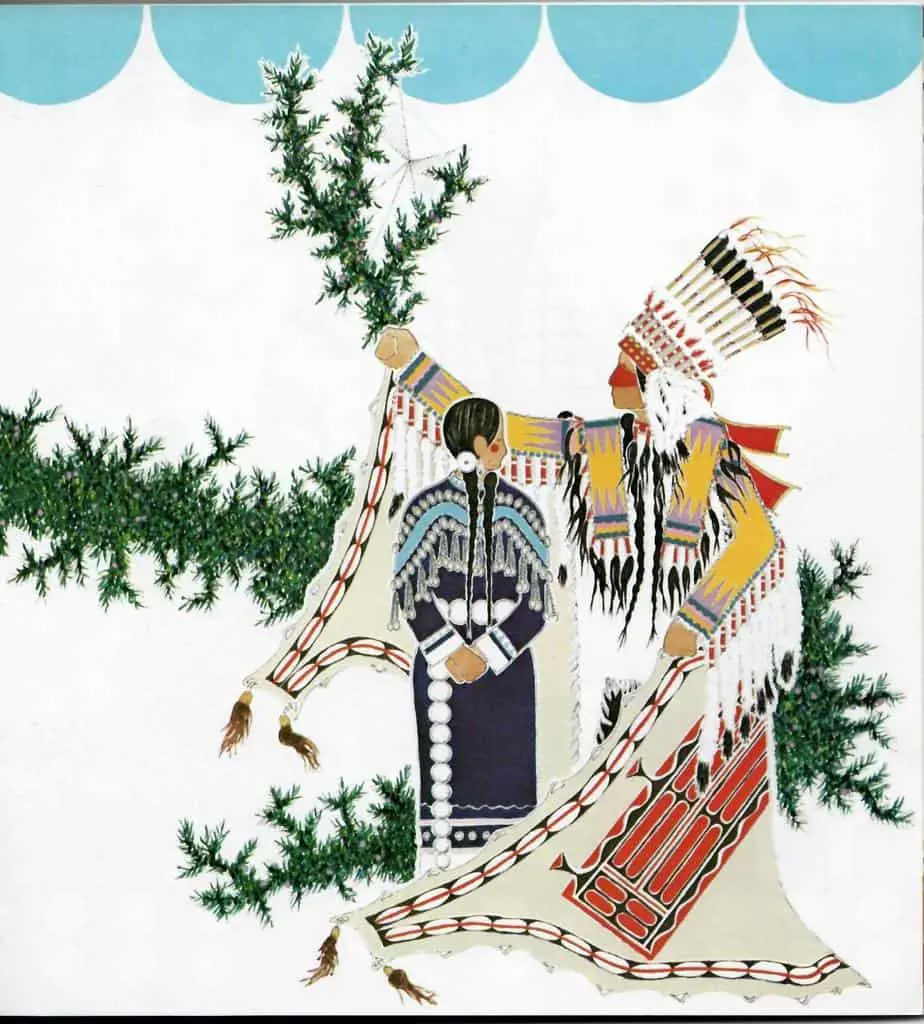
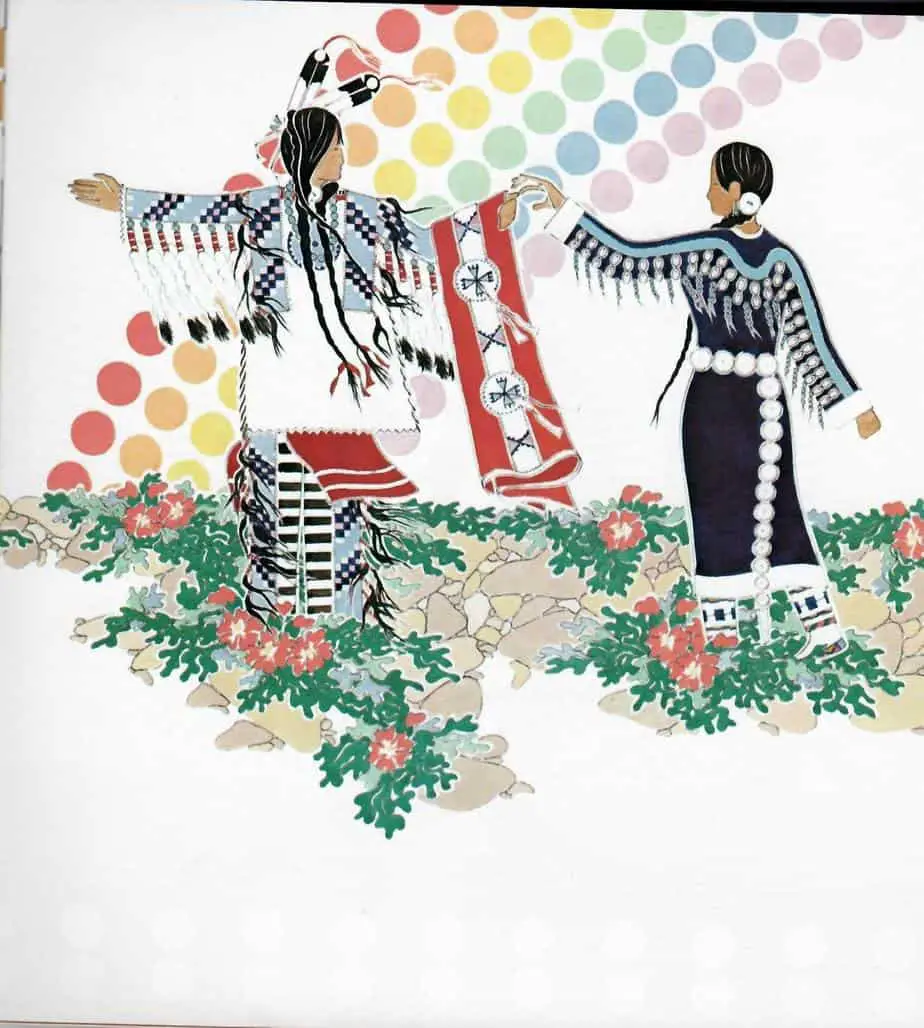
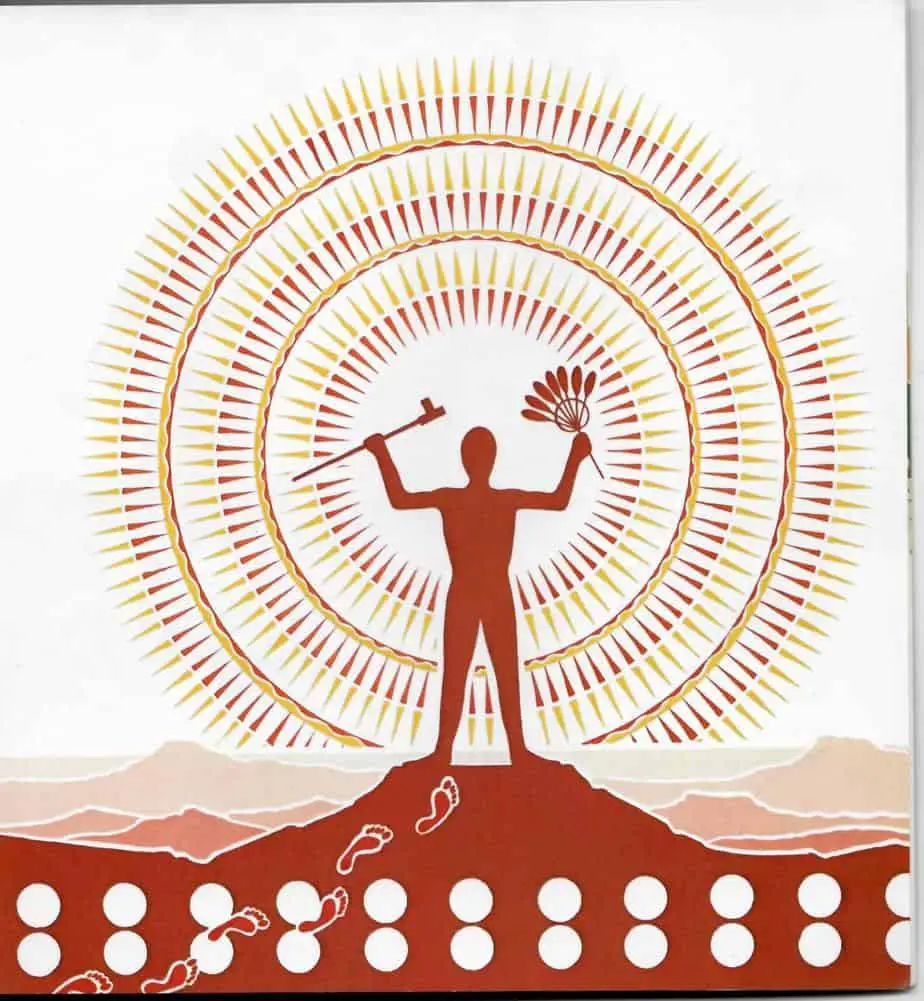
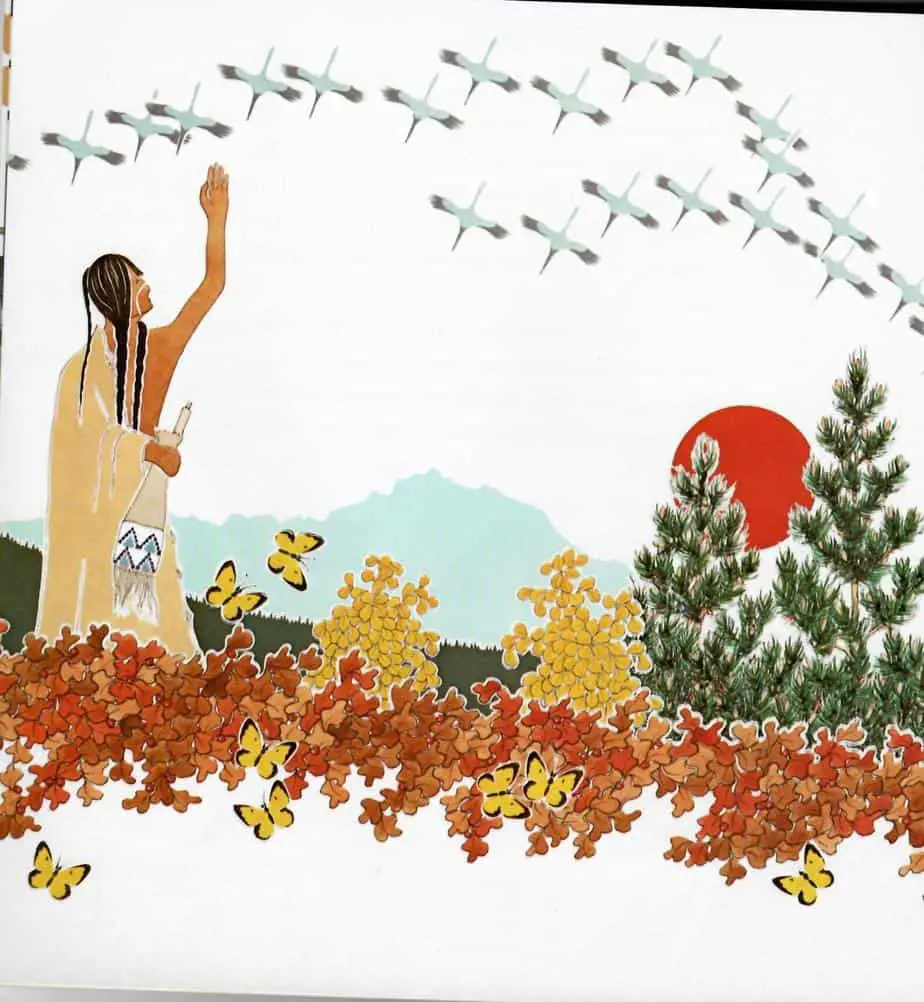
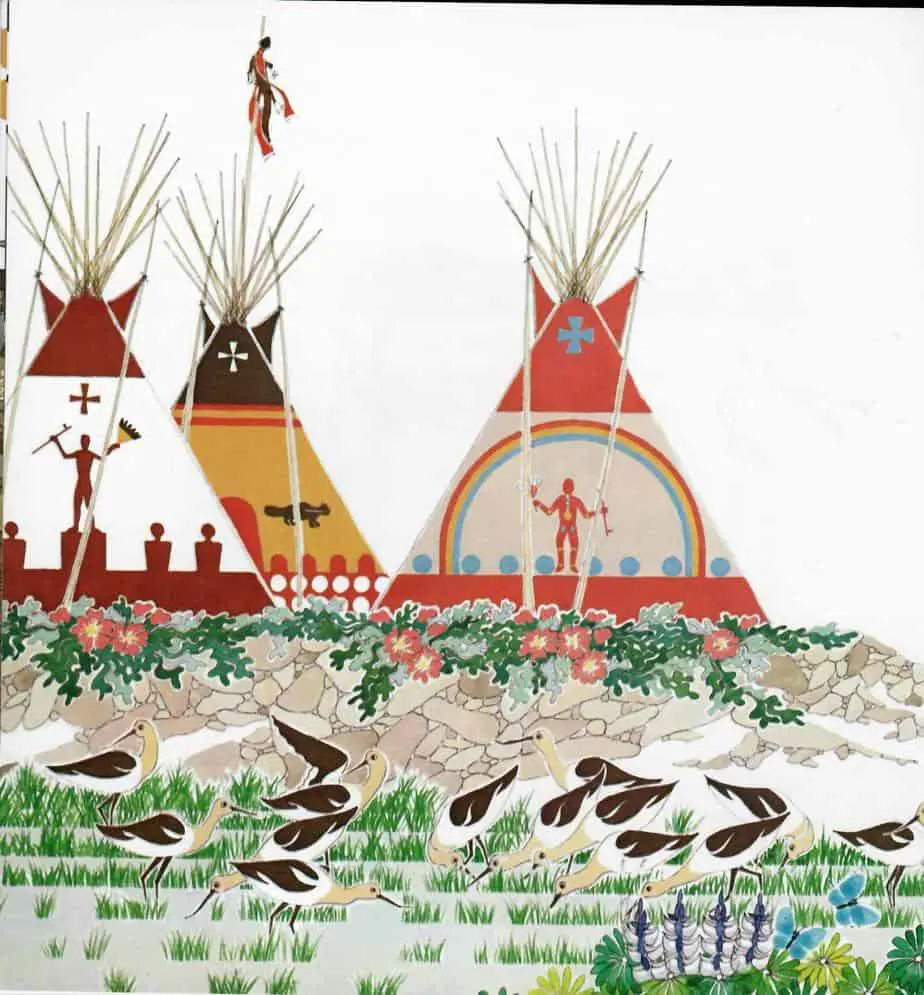
Braves – refers to Native American warriors. Today there’s the ‘Atlanta Braves’ baseball team, which is weird because otherwise the term is an insult due to its troubling history as outlined in this novel. (Ditto ‘redskins’.)
Card sharp – a person who uses skill and deception to win at poker or other card games. So, not quite a cheat. A card counter.
Cornshuck mattress – Lorena’s bed in Lonesome Dove is a mattress stuffed with the husks of Indian corn. None too comfortable.
Cowpoke – another word for a cowboy, but used disparagingly. A cowboy has prestige and credibility. A cowpoke tends to be lazy. Shortened also to ‘poke’.
Cowpuncher – yet another word for a cowboy
Comanche – a Plains Indian who inhabited what used to be called ‘Comancheria’. This part of the world is now New Mexico and parts of Colorado, Kansas, Oklahoma and Texas. The Comanche were hunter gatherers with a strong horse culture. Gus has killed as many Comanche as any other Ranger in his time. Despite this, he feels some affinity for them, being ‘people of the horse, not of the town’.
Cinematic Comanches: The Lone Ranger in the Media Borderlands
For centuries Comanches have captivated imaginations. Yet their story in popular accounts abruptly stops in 1875, when the last free Comanches entered a reservation in southwestern Oklahoma. In Cinematic Comanches: The Lone Ranger in the Media Borderlands (U Nebraska Press, 2022), the first tribal-specific history of Comanches in film and media, Quanah Parker descendant Dustin Tahmahkera examines how Comanches represent themselves and are represented by others in recent media. Telling a story of Comanche family and extended kin and their relations to film, Tahmahkera reframes a distorted and defeated history of Comanches into a vibrant story of cinematic traditions, agency, and cultural continuity.
Co-starring a long list of Comanche actors, filmmakers, consultants, critics, and subjects, Cinematic Comanches moves through the politics of tribal representation and history to highlight the production of Comanchería cinema. From early silent films and 1950s Westerns to Disney’s The Lone Ranger and the story of how Comanches captured its controversial Comanche lead Johnny Depp, Tahmahkera argues that Comanche nationhood can be strengthened through cinema. Tahmahkera’s extensive research includes interviews with elder LaDonna Harris, who adopted Depp during filming in one of the most contested films in recent Indigenous cinematic history. In the fragmented popular narrative of the rise and fall of Comanches, Cinematic Comanches calls for considering mediated contributions to the cultural resurgence of Comanches today.
New Books Network
Desperado – a desperate or reckless person, especially a criminal.
Farmers – are at the bottom of the pecking order. Cattlemen are a step up from farmers, according to cattlemen. Yet the cattlemen, along with Roscoe and July and Joe stay at farms along their travels, with interesting encounters along the way. I guess the farmers along the Army trail and other established cattle trails were used to overnight guests.
Horse thieves – were a threat to horse traders and rustlers and wranglers, though I can’t personally work out where one begins and the other ends. I suppose a horse thief steals horses that have already been rounded up by the likes of Gus and Call’s team, though it seems Gus refers to himself as a kind of ‘rustler’ (horse thief).
Horse trader – Clara’s husband Bob is a horse trader, and has made a lot of money by providing horses for the army. Gus considers this a dangerous job. “I’ve known horse traders who didn’t last a year.” Jake points out that Gus himself is a horse trader, though technically Gus round up the cattle and sell them on to horse traders. The comment about the danger of horse trading foreshadows the condition in which they will find Bob, who has been kicked in the head by a horse and rendered brain dead. Presumably the job is also dangerous because of the threat of being captured and scalped by Indians.
Horse wrangler – A wrangler is someone employed to handle animals professionally. So he breaks the horses in. A cowboy herds the horses up while himself on horseback.
Kiowa – another Native American tribe. They migrated from western Montana southward into the Rocky Mountains in Colorado in the 17th and 18th centuries, and finally into the Southern Plains by the early 19th century. In 1867, the Kiowa moved to a reservation in southwestern Oklahoma.There are about 12,000 left today. Call gets bitten in the back by a ‘Kiowa horse’ and Gus says he should’ve known better than to turn his back on one. This made me wonder if Kiowa horses were especially vicious. But Gus’s comment may have been a comment on the Kiowa people themselves: ‘Typical of all plains Indian peoples the Kiowa were a warrior people that fought frequently with enemies both neighbouring and far beyond their territory. The Kiowa were notable even among plains Indians for their long distance raids, including raids far south into Mexico and north onto the northern plains. Almost all warfare took place while mounted on horses after the introduction of horses into Kiowa society.’ (Wikipedia)
Listen to A Lady’s Life in the Rocky Mountains at Librivox
Nester – a squatter who settled on government land, usually to farm
Peon – a Spanish-American day labourer or unskilled farm worker (whose boss is a ‘jefe’). This is how the cowboys refer to the underling Native Americans. (For example the men who work under Blue Duck.)
Pistolero – Thrown around as an insulting term by these American cowboys, a pistolero is a member of an armed band of roving mounted bandits. Comes from Spanish ‘pistola’, of course. (Pistol.)
Posse – originally a body of men summoned by a sheriff to enforce the law. More widely, a group of people with a common occupation. ‘A posse of cowboys’ etc.
Sharpshooter – someone who can shoot a gun very accurately. Gus is the best sharpshooter in the group.
Sioux – Jake says the Sioux and the Cheyenne have got the grass of Montana all to themselves. He wants to go up there, kill them off and reap the financial rewards of claiming Montana for men like him. The Sioux comprise three major divisions based on Siouan dialect and subculture (Santee, Yankton-Yanktonai, and Lakota). Today, the Sioux govern across several reservations, communities, and reserves in North Dakota, South Dakota, Nebraska, Minnesota, and Montana.
Sodbuster – a farmer or farm worker who ploughs the land. As mentioned throughout Lonesome Dove, cowboys and outlaws pay little respect to farmers.
Stage robbers – people who rob stagecoaches, a type of four-wheeled covered wagon pulled by horses/mules. Stagecoaches were frequent targets for robbers, and it didn’t help that they ran on established routes at predictable times. (The Jarbidge Stage Robbery was the last stage robbery in the Old West. In 1916 a small two horse-driven mail wagon was ambushed on its way to Nevada.)
Vaquero – a horse mounted livestock herder. Basically a cowboy, before American cowboys existed. In fact, the American cowboys learnt much of their craft from the vaqueros, who developed their skills on the Iberian Peninsula, took them to South America and then moved up into America eventually.
Waddie – another slang term for a cowboy, though perhaps McMurtry is using an anachronism with this one. It maybe didn’t come about until the late 1800s. The word is used to describe skinny Jasper Fant. It is generally used affectionately to describe each other.
Wrangler – The person in charge of the remuda (group of horses) is generally known as a wrangler.
CLOTHING, FOOD, GEAR & LIFE
Arrows – while the white men used guns, the Indians used both guns (usually old and poorly maintained) and arrows. Sometimes the arrows were poisoned. Native American tribes used venomous reptiles to provide the poisons required. In the Southwest United States, the Gila Monster, being one of the only two venomous lizards.
Beaver hat – impossible to guess what a beaver hat would look like since, apart from being made of beaver, could be a variety of shapes and textures, from fluffy to shiny and smooth.
Bed-ground – the cowboy equivalent of a bedroom for the night. Good cowboys didn’t need much sleep, and had to remain awake on a horse for very long hours. Neither Gus nor Call need much in the way of sleep. The men whose circadian rhythms require more sleep soon get a reputation for being lazy.
Bowie knife – a fixed-blade fighting knife first popularized by James Bowie in the early 19th century.
Brogans – lace up shoes, worn by Louisa. There are both men’s and women’s styles. Louisa wears men’s ones.
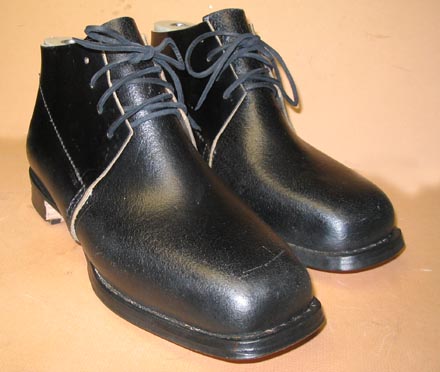
Buckboard – a four-wheeled wagon of simple construction meant to be drawn by a horse or other large animal.
Buckshot – coarse lead shot used in shotgun shells
Buffalo chips – dried buffalo dung used as fuel, sometimes even for cooking (which Gus hates)
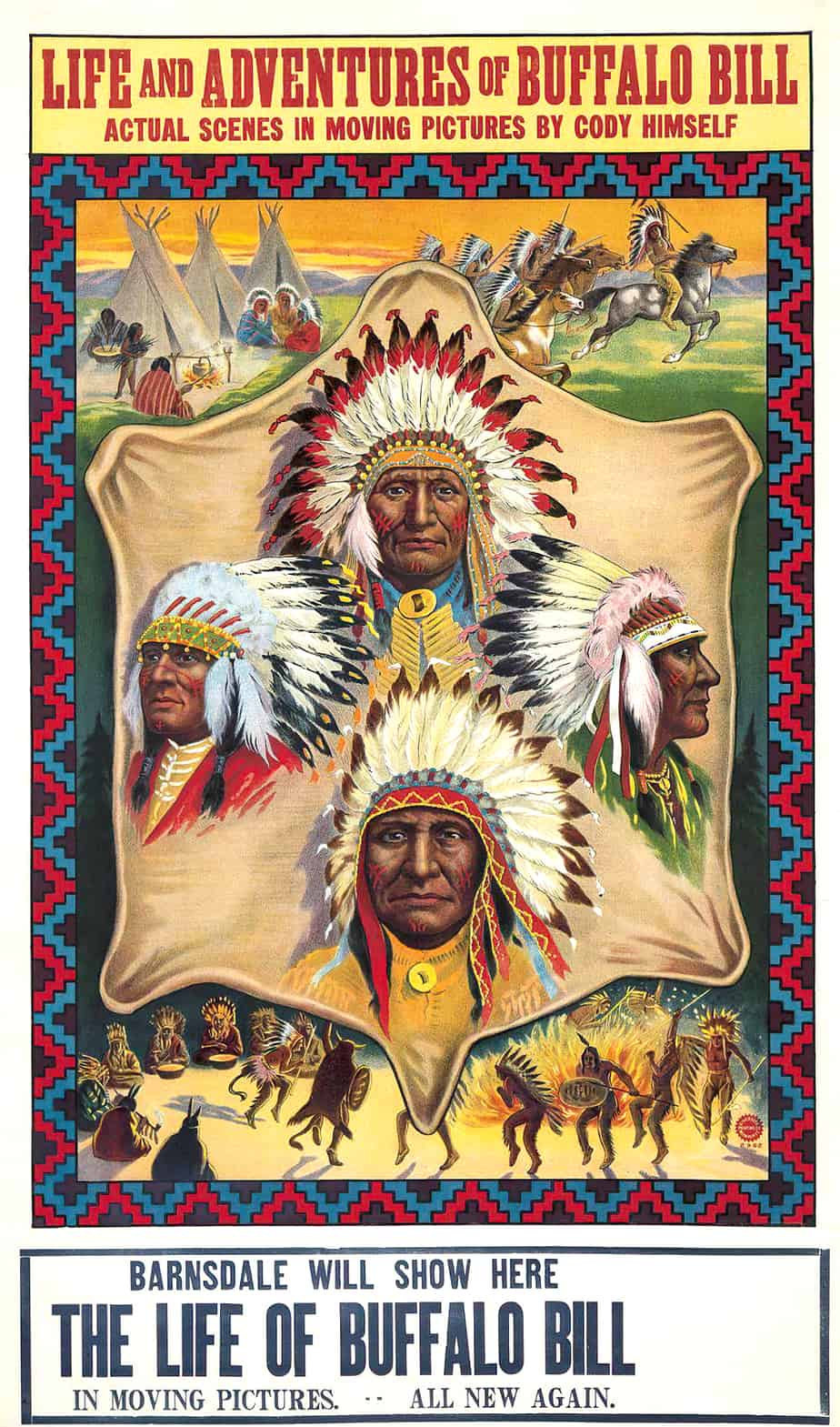
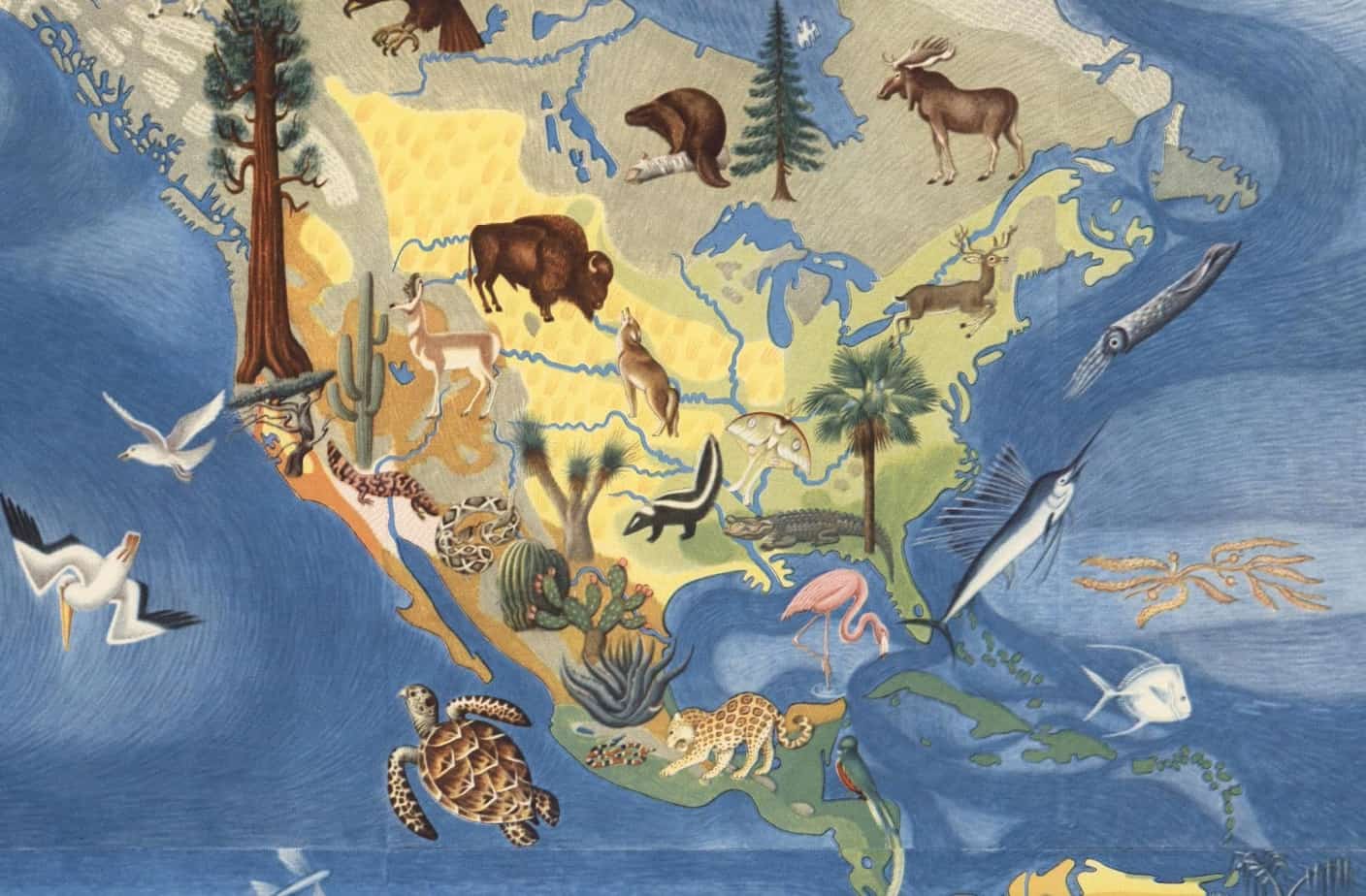
Buttermilk – both Gus and Call love to drink buttermilk. Originally, buttermilk was a byproduct: the liquid left behind after churning butter out of cream. These days it’s made by culturing milk.
Cap and ball gun – The cap and ball loading method is one of the first and earliest methods of loading a revolver. Samuel Colt created the first revolver in 1836 which relied on loose powder and ball, although this meant that the gun would be slow to load, usually requiring around four minutes, the method was practical and dependable. In the 1870s when the men met Indians using such a gun, this meant the gun was old-fashioned.
Cavalry cap – What Deets wears on his head. Apparently he found it lying around sometime in the 1850s. It’s like a baseball cap that’s kind of squashed down at the front.
Chaps – Leather pants that go over normal trousers to protect the legs when riding through bushy terrain. Chaps look like leather trousers minus the bum and crotch area. Sometimes fringed for decorative purposes.
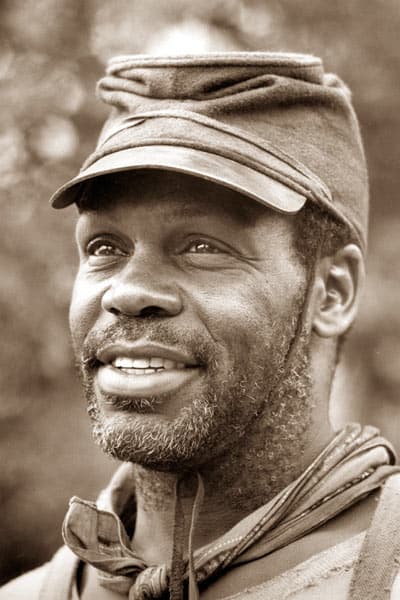
Cobbler – refers to a variety of dishes, consisting of a fruit or savoury filling poured into a large baking dish and covered with a batter, biscuit, or pie crust before being baked. Po Campo makes the men ‘a sugary cobbler made with dewberries’. (It’s thought that sugary food is good for hangovers.)
Derringer – a small pistol with a large bore, which is very effective at close range
Dewberry – any of a number of trailing brambles (in N. America) with soft prickles and edible fruit resembling the blackberry, which have a dewy white bloom on the skin
Dogie – motherless or neglected calf, easy to round up for even the most hapless cowboy.
Double eagle – a gold coin worth 20 dollars
Dust – it’s hard to imagine how much of it there would have been and how you would be affected in the days before even sunglasses. The men wore bandannas across their mouths to get less mud in their mouths, but the men new to the job found themselves wanting to throw up, there was so much white dust kicked up by the cattle. Men and horses looked white with it.
Fatback – as in ‘biscuits and fatback’. Fat from the upper part of a side of pork, especially when dried and salted in strips. (Apart from the biscuits – scones – these men pretty much at a paleo diet.)
Frock coat – worn by the eccentric entomologist, A frock coat is a man’s coat characterised by a knee-length skirt (often cut just above the knee) all around the base, popular during the Victorian and Edwardian periods.
Fryback – another food. Eaten with cornbread. I can’t find exactly what it is, though perhaps it’s leftover lard?
Goat-gun – Bolivar holds his goat-gun close when he’s feeling unsure. Gus is worried he’s going to blow up the whole house and everyone with it. I suppose it’s called his ‘goat gun’ because he uses it when he goes rustling goats, but underscores the way these men felt about their weapons — different weapons for different, specific purposes.Jake Spoon is said to have killed the dentist with his ‘buffalo gun’. Same with knives and horses.
Gunplay – the word to describe shoot ups. Gunplay is what the men fear when they go rustling.
Hackamore – Call instructs the boys to make hackamores after they’ve caught a large herd of horses. A hackamore is headgear which does not have a bit. Instead, it has a special type of noseband that works on pressure points on the face, nose, and chin.
Hats – liable to blow off more than one might think.
Henry – a rifle patented in 1860 by a man with the last name of Henry, funnily enough. Cal carries a Henry. Gus favours the Colt Revolver.
Hobble – horses need to be hobbled so they don’t run off. When one of the Irish brothers is startled and drunk he tries to ride off on a hobbled mule. A horse can be hobbled by tying two of its adjacent legs together, or by tying up one leg. I wonder how unpleasant this is for a horse.
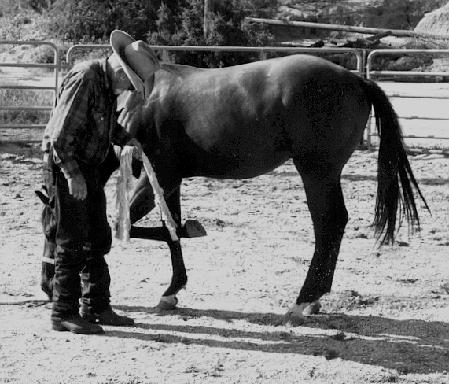
Horehound candy – a dark brown hard candy with a distinctly bittersweet taste. It is commonly sold in 5 inch long sticks or lozenges, which are often sugar coated. It’s a folk remedy for helping sore throats and other cold symptoms.
Lariat – a rope used as a lasso or for tethering. Bolivar takes one with him to have a shit among the chaparral. Gus and Call, looking on, can’t work out why he needs a lariat to take a dump.
Lunch – there is none. Call doesn’t like to stop for a midday meal. This makes a hearty breakfast important.
Malaria – Gus called his horse Malaria which makes me wonder the extent of its threat in that area at that time. Malaria was eradicated in America in the 1950s but had been prevalent in earlier eras, particularly before the 1880s. Malaria was a leading cause of death. When it didn’t cause death it seriously undermined public health. (In the southern states, including Kentucky, Tennessee, Alabama, Mississippi, Arkansas, Louisiana, and Texas, 7.8% of deaths in 1850 resulted from malarial fevers.)
Mash – home-distilled alcohol. Probably made with cornmeal, sugar and yeast in boiling water. You can even use sourdough as starter. This ‘mash’ was probably fermented by covering the pot in cheesecloth and storing in a dark place. After a while the top turns brown and foamy. When the sugar has been metabolised by the yeast it turns sour. Sounds disgusting. Prohibition didn’t take place in the US until 1920. The men also drink a lot of whiskey, often sharing a jug on the veranda.
Pallet – a straw mattress, or a crude or makeshift bed
Patching – needed to be done regularly, both on the wagon and on Deets’ quilt pants. I guess this means the men were good with needle and thread.
Plains Indian Sign Language – The Kiowa and other nations picked up sign language from the Mexicans. It’s no longer used much. It originated because each tribe spoke a different language, and they needed to trade to each other and so on. There is mention of sign language in the book. In the TV series, Gus seems to make the Plains Indian sign for ‘good’ as Blue Duck approaches.
Pommel – the highest part of the back of the saddle
Point – referred to positions, like sporting positions, alongside the herd. (Left point, right point etc.) The worst place to be was at the rear, catching all the dust. (The ‘drags’.) This spot was reserved for the lowest ranked in the crew, and in this case, the youngest. Dish is an excellent ‘point man’, keeping point all day, never letting the cattle get out of sight.
Reins – ideally made of plaited horse hair, which is stronger than leather reins.
Root-the-peg – a pocketknife game. Players flip knives to make them stick in the dirt. Another pocketknife game is mumblypeg, also called ‘mumbletypeg’, which is mentioned later in the book. The men use a ‘case knife’ which is term used in the south simply meaning a table knife.
Quirt – Lorena uses a quirt to cut a man’s face. I thought it was a kind of knife but actually it’s a whip. A quirt is a forked type of stock whip which usually has two falls at the end. The falls on a quirt are made of leather, buffalo, or cow hide. The core of the quirt is usually a leather bag filled with lead shot, the main part including the handle is often made from braided rawhide, leather or kangaroo hide and is usually somewhat stiff but flexible.
Rawhide – animal skin that has not been tanned. It’s therefore a much lighter colour than leather, more like parchment. (Think of a dog’s chew toy shaped like a bone like you can buy at the vet. That’s rawhide.) Cowboys used it to make whips because it’s more durable than leather. It’s also used to make drums and lampshades and sometimes shoes.
Rivermen – cause the sheriff in San Antonio grief. These are men who are ‘always drinking, fighting and cutting one another up’. I’m imagining men such as those in Huckleberry Finn, who live on boats, making lives of crime and odd jobs. Others would have made honest careers out of transporting fur and liquor and many other goods of the time by water. And it would have been a physically demanding job.
Rowel – Gus sits on Lorena’s bed and likes to ‘twirl the rowel of his spur’. It seems the ‘spur’ refers to the entire thing that straps to the boot. The ‘rowel’ is the little round thing with spikes that hurts the horses. Gus plays with his spur as if it’s a musical instrument. Some cowboys used to add small metal earring-looking things near their rowels which jangled when they walked. You’ll recognise the sound from cowboy movies or spoofs. These jangly pieces were called ‘jingo bobs’ or ‘jingle bobs’. I suppose those jingo bobs were the cowboy equivalent of no-muffler in the age of the rev-head.
Serape – Bolivar’s garment — a long, blanket-like shawl. Generally brightly coloured and fringed, worn by Mexican men. Bolivar gives one to Newt to use as an actual blanket.
Singing – the only skill those Irish brothers brought was their ability to sing. As Gus said, if there’d been two more of them, they’d have made a fine barbershop quartet. In fact the skill of singing wasn’t entirely useless. Cowboys used to sing overnight to keep the cattle calm. The songs would mask other sounds of the night, which were inclined to put the wind up the cows, in which case they were liable to take off in a panic. As long as the singing continued, the cattle remained calm. They would sing songs such as ‘Bury Me Not On The Lone Prairie‘ and probably got mighty sick of the songs they knew, though Irishmen are famous for knowing many, many songs as they come from a strong tradition of singing.
Singletree – These days called simply a ‘tree’ – the top part of a saddle. Made of wood, hence ‘tree’. In the old days saddle trees comprised different parts of wood. Then they were made of a single piece of wood, but for a while the term ‘single tree’ distinguished the two kinds. Peaches gives July’s stepson an old singletree before the two set off after Jake Spoon. I had to ask what the ‘single’ refers to on Quora and here are the answers.
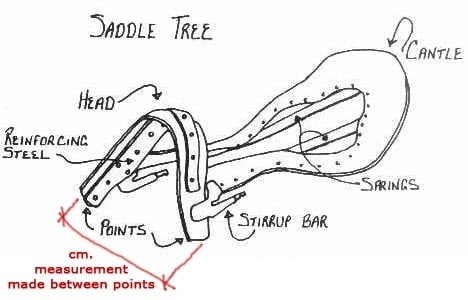
Saddle – the saddle was possibly a cowboy’s most important piece of equipment. He used it not only to ride in but as a pillow at night. He used its horns to tie the end of a lasso. His other equipment hung off it. A saddle was like a pair of boots in that it needed breaking in, and would have moulded itself under specific pairs of buttocks.
Saddle scabbard – where the men keep their rifles. Looks like a scabbard a cowboy would wear on his belt, but this is bigger and hangs off his saddle.
Saddle soap – still used today for keeping leather supple. Comes in a tin like shoe polish and apparently has a distinctive smell.
Sidearm – a weapon worn at a person’s side, such as a pistol or formerly a sword
Six-shooter – a revolver with six chambers
Slicker – a long overcoat. A cowboy slicker would ideally have had three buttons above a split at the back, with the buttons doing up over the man’s backside, making it more practical for sitting astride a horse. Gus wore a yellow slicker.
Trail-broken – once the cattle are trail-broken it’s easier for the cowboys to keep them going where they want them to go.
Walker Colt – The Colt Walker was a single action revolver with a revolving cylinder holding six charges of black powder behind six bullets. It was designed in 1846. Deet carries one of these.
Winchester rifle – Winchester rifles were among the earliest repeating rifles; the Winchester repeater was incredibly popular and is colloquially known as “The Gun that Won the West” for its predominant role in the hands of Western settlers. But Call always uses a Henry, even when his men are all using Winchesters due to their being lighter. Perhaps Call considers a lighter gun a kind of laziness.
FLORA AND FAUNA
Bay horse – Bay is a horse colour. Brown with black hairs in it. (Unlike ‘sorrel’, in which there are no black hairs in the mix.)
Beeves – plural of beef (cows raised to be beef)
Bison – The systematic commercial bison hunting by white hunters in the 19th century nearly ended the bison herds and permanently changed Native American life on the Great Plains. Early American settlers called bison “bufello” due to the similar appearance between bison and buffalo, and the name “buffalo” stuck for the American variety. But buffalo and bison are different animals.You find actual buffalo in Africa and Asia. The American bison has a large shoulder hump and massive head. Buffalo have all but gone from the South but are still plentiful in Yellowstone, according to Jake, at the time of the story. It’s commonly thought that bison were plentiful on the American plains before white men arrived, but in fact the Native Americans themselves kept the populations down. For a while there was a population explosion of bisons, between the events of white men killing a lot of Native Americans, and white men killing a lot of bison.
BUFFALO: ALSO KNOWN AS THE AMERICAN BISON by Spencer Hall
Bronc – short for bronco, a wild or half-tamed horse of the western US.
Bulls – unlike grizzlies, unbranded bulls were a genuine threat, wandering into camp and mating with the cows, charging at the cattlemen, threatening their horses.
Bullbat – not a bat but a common nighthawk. Comes out at sundown. It is sometimes called a “bull-bat”, due to its “bat-like” flight, and the “bull-like” boom made by its wings as it pulls from a dive.
Buzzards – if cowboys see buzzards in the distance circling around something on the prairie it’s a good sign they’re eating something dead. No wonder buzzards have an ominous undertone in film.
Chaparral – a shrubland/heathland plant community found mainly in California and the North Baja California Peninsula. Shaped by mild, wet winters and hot dry summers with wildfire. Comes from Spanish ‘chaparro’, meaning the Kermes Oak.
Crawdad – dialect for a kind of crayfish. In Australia they’re called ‘yabbies’.
Cottonmouth – a large, dangerous semiaquatic pit viper which inhabits lowland swamps and waterways of the south-eastern US. When threatening it opens its mouth wide to display the white interior. Another danger when crossing rivers and stopping to let horses drink.
Dun horse – a dun horse comes in a variety of colours but its body is lighter than its mane and its legs.
Gant horse – ‘gant’ is also used as a verb as in ‘to gant a horse’. Seems to be a regional variation on ‘gaunt’, and means to make a horse thin by insufficient feeding and a lot of riding/work. Also ‘to gant up’. Seems to be Scottish. (The character of Call was born in Scotland, which causes Gus to accuse him of not being American over breakfast.)
Gelding – a castrated animal, especially a male horse. ‘To geld a horse’ is the verb.
Grizzly bears – the men are scared of bears, perhaps in a pleasantly threatening kind of way, because they’ve never actually seen one down south. There would have been a few back then, sure, but grizzly bears were pretty much wiped out from the plains of America (by men such as these) between 1850 and 1920. Today grizzlies are not found in America outside Alaska and the very top of the Canadian border. The cowboys in LD did eventually meet a grizzly when they got high enough. It proved about an even match for the bull.
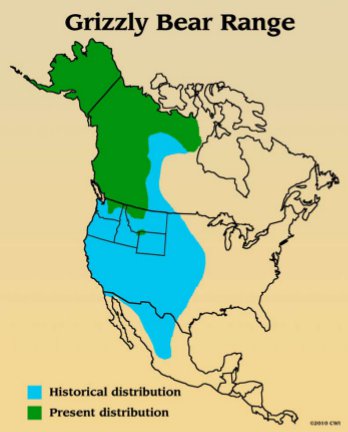
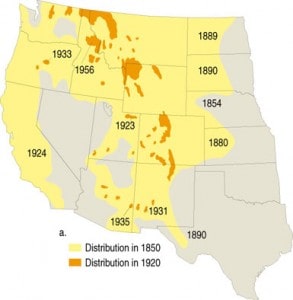
Grulla – a type of horse coloration. (Pronounce as if it’s still only Spanish.) The body colour will be smoky or mouse coloured (not a mixture of black and white hairs, but each individual hair is mouse colored). A grulla usually has a dorsal stripe, shoulder striping or shadowing and black leg barring on lower legs. Grullo is used equally.
Horse nickering – Lorena can hear horses nickering from her room, but I had no idea what that actually sounded like. Here’s a YouTube video of someone’s horse nickering. It’s basically an excited grunty sound. People who know horses divide nickers further: There’s the greeting nicker, the courtship nicker and the maternal nicker.
Jackrabbit – a hare found on the prairies and steppes of North America
Lobo wolf – lobo is Spanish and Portugese for wolf, so I guess the men mean wolves from across the border.
Locoweed – (also crazyweed and loco) is a common name in North America for any plant that produces swainsonine, a phytotoxin harmful to livestock. (It looks quite a lot like Paterson’s Curse, which is the equivalent around these parts.)
Mosquitoes – It’s hard to imagine how much of an annoyance these would have been. The mosquitoes are so thick at one stage that if one of the cowboys touched his face he’d end up with a red smear across it. There wasn’t even the benefit of DIMP. I guess a successful cowboy would have had to build up somewhat of a resistance to the bites over time, or else end up covered in huge welts. It’s mentioned that the Irish brothers suffered most, and I’m thinking it’s because they had yet to build some resistance to the local mosquitoes.
Mesquite – the coals of mesquite are used for fires to cook over. Mesquite are trees which grow in hot, dry areas of southern America, as far north as Southern Kansas. The cattle herders do not like mesquite because it’s hard to drive cattle through. They much prefer the prairies.
Mouse snake – the boys are scared even of mouse snakes after one of the crew is killed by a nest of cottonmouths. I wonder if they mean a ‘rat snake’ which is not venomous, changing it to ‘mouse snake’ to make it seem even less harmful.
Nag – an old/worthless horse
Pacing horse – Jake Spoon is known for riding a pacing horse. What is that, exactly? Jake says he prefers pacing horses because they’re ‘easier on the seat’. It’s to do with a horse’s gait: ‘a pacing horse is less stable on uneven ground, which would make it less practical as a cowboy’s horse. A pacing horse lifts the front and back leg on the same side, and rocks side to side as it moves forward. A trotting horse lifts right front/left rear (left front/right rear) together, and it’s a much more even gait for the horse (and the rider). … For some horses, pacing is a fairly natural gait because it’s been bred into them. It is possible that in the Lonesome Dove example, they are not referring to an actual pacing horse, but just any horse with a fancy gait that wasn’t necessary, such as a Tenneesee Walking Horse… they’re giving [Jake] crap because he’s got a fancy-pants horse when any regular horse would have been a more practical choice.’ (MetaFilter) When Gus sees an Indian (Blue Duck) riding a pacing horse he is immediately suspicious. Indians didn’t traditionally ride them, so Blue Duck may have shot a Mexican and taken his pacing horse.
Possum – are mostly eaten by negroes, who catch them. (Negroes also eat turtles, according to the girl who tags along with Roscoe.)
Prickly pear – an annoyance to cowboys who are often getting spiked by it. I wondered if the bush grew pears, at least. Turns out it’s a cactus — the archetypal kind that you would’ve seen on Road Runner etc. Its hairlike prickles easily penetrate the skin. They’re native only to America but have been introduced to other parts of the world, including Australia. The fruit of prickly pears is edible, although it must be peeled carefully to remove the small spines on the outer skin.
Rat Snake – a medium to large constrictor. They eat mainly rodents and birds and are nonvenomous.
Rattlesnakes – are a plenty in Lonesome Dove. Jake Spoon says it’s a pity there’s not a good trade in snake meat, in which case Lonesome Dove would be a lot better off. Unlike rat snakes, rattlesnakes are venomous. Poison gets into you when the snakes bites with its fangs. There was no antivenom when this story was set. Antivenom was originally called ‘antivenin’, and the first published use was in 1895. At first it was just for the Indian cobra. These days, if you got bitten by a rattlesnake you’d need a product called CroFab, the only official treatment in America since the year 2000. Before that there was Crotaline, which had only been around since 1953 anyhow. If you’re bitten by a rattlesnake there’s a chance it’s a ‘dry bite’ — one without venom. But you can also lose a limb or your life, especially if you have an anaphylactic reaction, or are stuck out in the wilderness.
Remuda – a herd of horses from which ranch hands select their mounts. The word is of Spanish derivation, for “change of horses” and is commonly used in the American West.
Shoat – a young pig, especially newly weaned. The shoats (often called pigs by the characters) hang around Lonesome Dove, killing snakes etc. The shoats in Lonesome Dove are often described as having a ‘blue’ coat. This is a black/grey colour which looks bluish under the light.
Snub a horse – an unbroken horse is sometimes tied (snubbed) to a snubbing post so it can’t run around of its own accord. Also called a ‘patience pole’.
Sorrel – Sorrel is a herb, and the flower on its spike is a brown colour, which is used to describe one of the main colours of horse. Brown, for the uninitiated. You’ll have seen plenty of brown horses. Technically that shade is called ‘sorrel’. A sorrel horse has no black hairs.
Steer – a castrated male bull. Steerhide is leather made out of a steer’s skin. The saddler uses strips of it to make rope.
Turtles – can be seen in the rivers. Janey calls them ‘snappers’ and is more afraid of them than of rattle snakes. Roscoe assures her that they may be deadly but they’re slow.
Varmint – an animal considered a pest; specifically : one classed as vermin and unprotected by game law.
Water moccasins – the snake that killed the Irish boy when crossing the first river. Another name for cottonmouth.
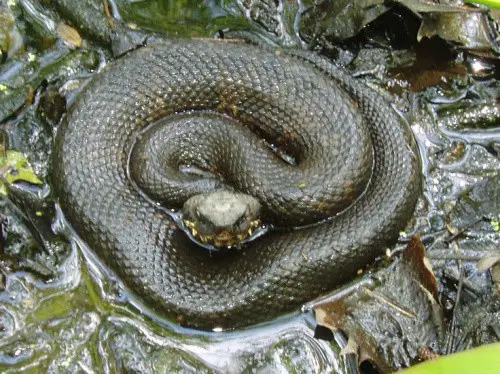
Withers – the highest part of a horse’s back, lying at the base of the neck above the shoulders. The height of a horse is measured to the withers.
HISTORY
This story happens 1876-1879 or thereabouts. What was going on in America at this time? According to Call, the big towns have things like ‘oprys and streetcars’, though he personally does not hanker after such things, preferring a comfortable life in the wilderness. For these men, the border is the safest place for them to be, because the local Native Americans have been killed, chased off or mainly subdued. For them, travelling through the Wild West will present a hazard, as this is not the case yet for all of North America.
Of the men in Lonesome Dove, only a few can read at all, and Gus is the best educated of them, misplaced apostrophe notwithstanding. He has a primitive introduction to Greek and Latin, though never finished his education. While much of America is illiterate, the best lettered know not only how to write in English but in Greek and Latin as well.
Deets being black has never had a scrap of education and won’t believe Gus when Gus tells him the world is flat. His view on the world is of the superstitious kind. Others in the group don’t know where Canada is exactly. Even the worldly Gus doesn’t know if the Northern Lights are visible from Montana. Newt thinks ‘the north’ is a place rather than a direction, and has never ridden further than San Antonio.
Although Deets is Call’s most reliable man, Call can’t put a black man in charge of anything. It goes without saying that women of the Wild West have no rights and no say whatsoever, and if they achieve anything in life it’s by persuading a white man to help them out. Gus regularly refers to the men as ‘girls’ in a mildly insulting way, pointing out the gender hierarchy each time.
America is still in its Puritan era. Lorena’s clients don’t even like to take their clothes off most of the time, which is what makes Gus and Jake different. Many are scared away when she undresses herself, which is why she does it.
A lot of men are suffering PTSD after the Civil War. Bill Spettle for example ‘died of drink’. There’s a hole in the male demographic. These lands are missing middle aged men. In fact, the male death rate is still so high that if a man sees a married woman he likes the look of he’s inclined to wait until her husband dies rather than give up hope of romance altogether. Gus is especially prone to this way of thinking.
For an account of a slightly earlier time: Review of Mark M. Smith’s “The Smell of Battle, The Taste of Siege: A Sensory History of the Civil War”
Big Indian Raid of ’56 – Clara’s parents were killed in this raid in Austin. The Texas–Indian wars were a series of conflicts between settlers in Texas and the Southern Plains Indians. The Comanche fought hard against the settlers. The years 1856–1858 were particularly vicious and bloody. I can’t work out if the ‘big Indian raid of ’56’ refers to a particular actual big struggle during that time, but the main thing is that the last big big struggle happened in 1858, with the Battle Of Little Robe Creek. This marked the end of Comancheria.
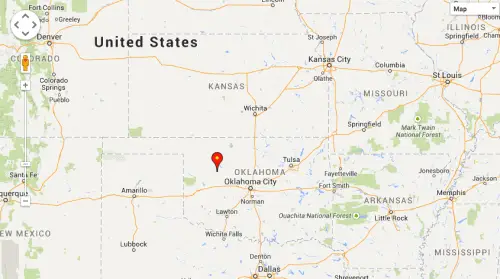
How much did Gus pay to have a poke at Lorena that time Jake Spoon was out branding dogies?
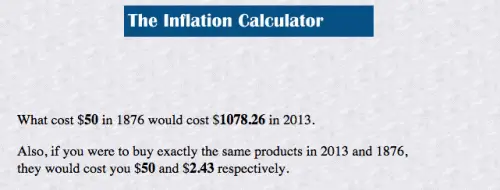
So when Lorena charged $2 per session it would cost the modern man $50. Roscoe as Deputy Sheriff was earning about $750/month and I guess that’s how he figured he was poorly paid.
Scalping – Gus lives with the fear of being ‘scalped’. His hair turned white age 30, but he still has a head full of it, which makes him nervous because he guesses it’s attractive to Indians. He doesn’t really want to ride up to Montana in case he’s scalped. What is scalping, and was this really a thing? Indeed, ‘Scalping is the act of cutting or tearing a part of the human scalp, with hair attached, from the head of an enemy.’ Some Native American tribes practised scalping from way back (while others never did). The practice lasted until the end of the 19th century in some cases, and was still going on during the Civil War, which I suppose legitimised Gus’s concern for his head. As usually happens, something as gory as this has a lot of mythology around it, and it would seem the white man took up this practice with creepy gusto. There was already a European tradition of using heads as trophies and proof of bounty hunting; scalps were only a small modification on that.
Summary justice – refers to the trial and punishment of suspected offenders without recourse to a more formal and protracted trial (for example a jury trial) under the legal system. It is also a term sometimes used to describe or justify vigilantism. Call and Gus prefer this kind of ‘justice’ since the only jailers available in the wild west are ‘circuit jailers’, who may or may not turn up to a trail if a criminal is found.
General Lee – Bolivar is under the impression that ‘General Lee freed the slaves.’ Gus points out that it was actually Abe Lincoln who freed the slaves. Robert E. Lee (1807-70) served as a military officer in the U.S. Army, a West Point commandant and the legendary general of the Confederate Army during the American Civil War (1861-65). He’s famous for being bloody-minded, sacrificing lives in big struggle even while knowing the big struggle was hopeless. These days Lee is generally considered a hero in the south and a traitor in the north, but mostly as a soldier who fought for a cause he believed in. After he seceded in the war, he did spend the rest of his life fostering relations between the north and the south. (This makes me think he’d have fought just as hard for the opposite side had his birthplace been slightly to the north.)
Goodnight-Loving Cattle Trail – Charles Goodnight and Oliver Loving were real men. They are ficionalized in Lonesome Dove by Call and Gus respectively. (Gus = Loving and Call = Goodnight.) The fictional characters are very different in personality and circumstance from the real life men, though the main plot points line up approximately. Also, Gus mentions Charlie Goodnight in his conversation with Blue Duck, so even if these two characters are based on real men, the real men also exist within the story.
Rangers – Gus and Call used to be rangers before they started the Hat Creek Cattle Company and Livery Emporium. But what exactly did rangers do? ‘The Texas Rangers were unofficially created in a call-to-arms written in 1823. Ten years later, on August 10, 1835 Daniel Parker introduced a resolution to the Permanent Council creating a body of rangers to protect the border. The unit was dissolved by the federal authorities during the post–Civil War Reconstruction Era, but was quickly reformed upon the reinstitution of home government. Since 1935, the organisation has been a division of the Texas Department of Public Safety; it fulfills the role of Texas’ state bureau of investigation.’ (Wikipedia) The Texas Rangers is the oldest law enforcement in America. Here’s a description of a ranger’s camp life. (Spoiler alert: Not all that romantic.) Gus and Call also shot their fair share of Indians. But the job ‘wore out’. ‘In the south it became mainly a matter of protecting the cattle herds of rich men like Captain King or Shanghai Pierce, both of whome had more cattle than any one man needed. In thenorth, the Army had finally taken the fight against the Comanches away from the Rangers, and had nearly finished it. He and Call, who had no military rank or standing, weren’t welcomed by the Army; with forts all across the northwestern frontier the free-roving Rangers found that they were always interfering with the Army, or else being interfered with. When the Civil War came, the Governor himself called them in and asked them not to go—with so many men gone they needed at least one reliable troop of Rangers to keep the peace on the border.’
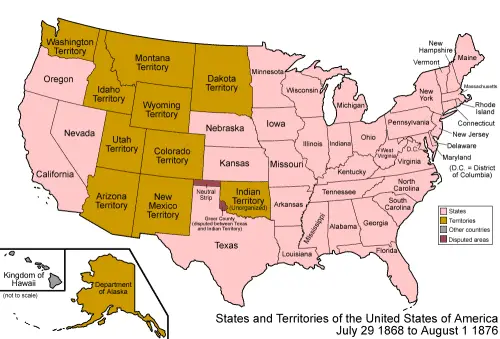
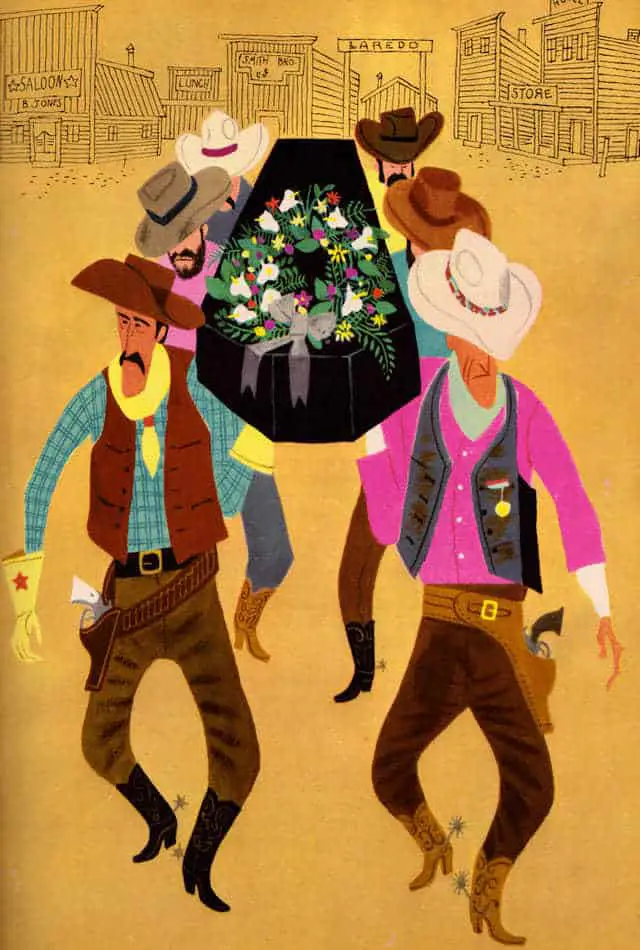
FOR FURTHER INVESTIGATION
Episode 7 of the Then Again Podcast: “The West: The journey and the myth”. “Well Pardner, pull yer horse up ‘round the chuck-wagon an’ play a hand of poker ‘round th’ campfire while trick shootin’ a rattlesnake off a cactus with yer six-gun…or forget that nonsense and let’s talk about the real West! Though what most people think of as the Old West realistically lasted only about 20 years, it has a vast mythology. In this episode Ken and Glen ride the range of those myths – and the realities behind them.”
Episode 19 of the Then Again Podcast: “The Frontiersman: Daniel Boone vs. Davey Crockett”. The ultimate Frontiersman – Daniel Boone! No – Davey Crockett! Wait, weren’t they the same coonskin hat wearin’, flintlock rifle totin’ guy? Nope, but the same guy, Fess Parker, did play them both on TV – thus confusing a generation. In this episode Ken and Glen head out to the Frontier to discuss what it is and isn’t, and just how accurate pop culture perceptions of The Frontier may be – Spoiler Alert: Not Very.
Before the Pioneers: Indians, Settlers, Slaves, and the Founding of Miami (UNIVERSITY PRESS OF FLORIDA 2017) (podcast and book)
Header illustration: The Brave Cowboy, by Joan Walsh Anglund
